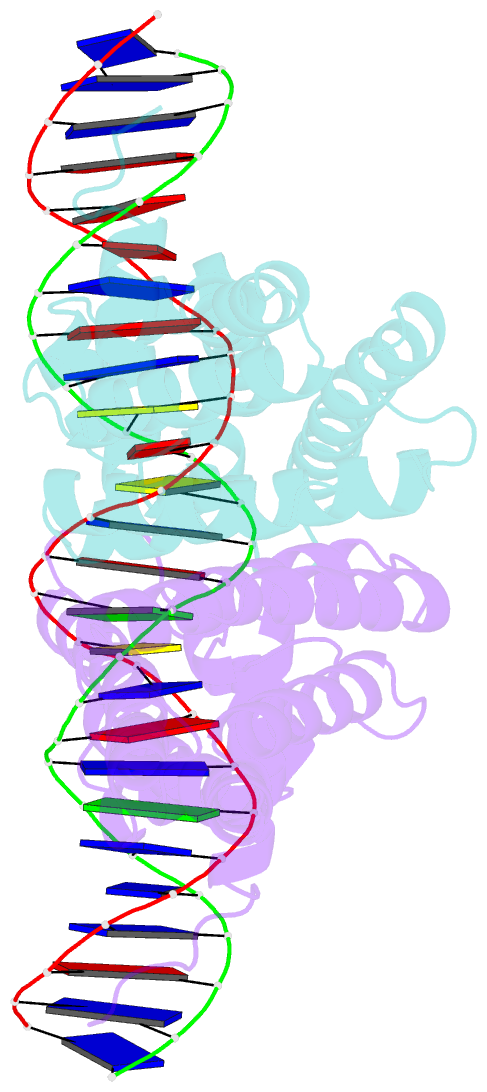Summary information and primary citation
- PDB-id
- 6nsn; SNAP-derived features in text and JSON formats;
DNAproDB
- Class
- transcription-DNA
- Method
- X-ray (2.6 Å)
- Summary
- Tetr family transcriptional regulator cifr c99t-c181r cysteines mutant complexed with 26bp double-strand operator DNA
- Reference
- He S, Taher NM, Simard AR, Hvorecny KL, Ragusa MJ, Bahl CD, Hickman AB, Dyda F, Madden DR (2024): "Molecular basis for the transcriptional regulation of an epoxide-based virulence circuit in Pseudomonas aeruginosa." Nucleic Acids Res. doi: 10.1093/nar/gkae889.
- Abstract
- The opportunistic pathogen Pseudomonas aeruginosa infects the airways of people with cystic fibrosis (CF) and produces a virulence factor Cif that is associated with worse outcomes. Cif is an epoxide hydrolase that reduces cell-surface abundance of the cystic fibrosis transmembrane conductance regulator (CFTR) and sabotages pro-resolving signals. Its expression is regulated by a divergently transcribed TetR family transcriptional repressor. CifR represents the first reported epoxide-sensing bacterial transcriptional regulator, but neither its interaction with cognate operator sequences nor the mechanism of activation has been investigated. Using biochemical and structural approaches, we uncovered the molecular mechanisms controlling this complex virulence operon. We present here the first molecular structures of CifR alone and in complex with operator DNA, resolved in a single crystal lattice. Significant conformational changes between these two structures suggest how CifR regulates the expression of the virulence gene cif. Interactions between the N-terminal extension of CifR with the DNA minor groove of the operator play a significant role in the operator recognition of CifR. We also determined that cysteine residue Cys107 is critical for epoxide sensing and DNA release. These results offer new insights into the stereochemical regulation of an epoxide-based virulence circuit in a critically important clinical pathogen.





